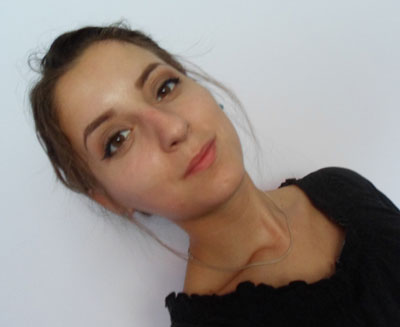If you have sleep apnea, you may have come across the terms APAP or CPAP. APAP stands for automatic positive airway pressure, while CPAP means continuous positive airway pressure. APAP and CPAP represent two different forms of positive airway pressure (PAP) therapy, which is often recommended for those with sleep apnea, a sleep disorder in which a person experiences periodic gaps in breathing during sleep.
Both of these machines deliver pressurized air to help you breathe better while you sleep, but there are specific differences between them. We’ll discuss how both machines work, focusing on their benefits and drawbacks to help you gain more insight into these sleep apnea treatment options.
APAP Therapy
As mentioned, APAP stands for automatic positive airway pressure. This means the APAP machine automatically adjusts the pressure level of air according to your breathing patterns and needs. By measuring your breathing, the APAP machine knows whether to increase or decrease the air pressure.
This sleep apnea machine pushes the air into your nose, mouth, or both, depending on your needs. This is done through a mask and hose, which are attached to the machine.
APAP Mask Options
APAP machines have different types of masks. You can choose between one that covers the entire nose, one that covers only the mouth, or both the nose and mouth.
The way you strap them to your face also varies. Some masks go all the way around the head, while others reduce contact with the face to allow for a more comfortable sleep.
In some cases, your sleep specialist may give you a few options to try because there is no one-size-fits-all option. The best mask is one that fits comfortably and will not make it difficult to fall asleep.
Additional APAP Features
Many PAP machines come with additional features, and APAP machines are no different. Below are some features you may come across:
- Heated humidity – A heated humidifier can provide benefits similar to a regular humidifier, such as reducing nasal dryness1.
- Pressure relief – Some people can experience discomfort when exhaling with a PAP machine. For this reason, some APAP machines have a pressure relief feature that your medical provider would set up. This allows the machine to deliver the air at a lower pressure when you’re breathing out, making it more comfortable to exhale with the mask on.
- Pressure ramp – Pressure ramps are also designed to reduce discomfort, allowing you to start the machine with lower air pressure. As time goes by, the pressure should increase to the pre-set level. This can help some users fall asleep more easily.
What Are the Differences Between APAP and CPAP?
APAP machines automatically adjust the air pressure to your needs, and CPAP machines deliver a continuous pressure level.
Benefits of an APAP Machine
The automatic adjustability of APAP machines makes them more convenient for people whose breathing and pressure needs might change more frequently. According to health researchers2, APAP is beneficial because it can adjust to changes in weight, nighttime alcohol consumption, sleeping position, sleep stages, and changes in the person’s upper airway anatomy.
Potential Drawbacks of an APAP Machine
Some experts say that APAP machines could create disadvantages for some users, such as being disrupted from sleep by fluctuations in pressure and sleep-disordered breathing worsening when the air pressure is lowered too much.2
Additionally, these machines may not work for all sleep apnea types. People with complex sleep apnea syndrome3 may not experience any relief using an APAP machine.
Another drawback to APAP machines is their price. They can be more expensive than CPAPs, and your insurance may not cover an APAP device unless other forms of treatment have been ruled out as possible options.
Benefits of a CPAP Machine
Like APAPs, CPAP machines can help you get a better night’s sleep and reduce sleep apnea symptoms by delivering pressured air into your nose and/or mouth.
CPAPs are usually recommended for4 those with mild to moderate obstructive sleep apnea and people who are new to PAP treatment. CPAPs are also the type of device more likely to be covered by insurance, though insurance may cover APAP therapy if CPAP isn’t a viable option. Lastly, CPAP machines are generally cheaper than APAP devices since they’re not as advanced.
Potential Drawbacks of a CPAP Machine
The biggest drawback of CPAP machines compared to APAP ones is that they don’t automatically adjust the air pressure. A steady stream of airflow could be more difficult for some people to fall asleep to, which could compromise CPAP compliance (how consistently you’re using the device).
Also with CPAPs, people may be more likely to swallow too much air since the air pressure doesn’t change, which could lead to bloating and discomfort.
How to Buy an APAP or CPAP Machine
You need a prescription from a medical professional to obtain a CPAP or APAP machine. Not only will they decide which type of machine you need, but they will also determine the pressure setting(s) needed to treat your sleep apnea.
One thing to keep in mind is that this may take a while longer because your doctor will have to conduct a sleep study to diagnose you with sleep apnea first. Once you get a prescription, you can get a CPAP or APAP machine through your insurance provider or by purchasing it yourself.
More Information: Does Insurance Cover CPAP Machines?
Frequently Asked Questions
Is APAP better than CPAP?
Both serve the same purpose, which is to treat sleep apnea and its symptoms. They do this in different ways, so which one is better depends on the exact symptoms you’re dealing with. It will be up to your specific healthcare provider as to which machine is best for you.
Does an APAP give you oxygen?
APAP devices don’t give you oxygen or oxygen-enriched air. If this is something you need, you should look for an oxygen concentrator instead. APAP (and CPAP) devices work by pulling the air from the room you sleep in, filtering it, and pressurizing it according to the settings prescribed.
Who should not use APAP?
Those with complex sleep apnea, which is when you experience both central sleep apnea and obstructive sleep apnea, shouldn’t use APAPs.3 They may also not be ideal if you plan to pay out of pocket for your PAP therapy since they’re often more costly. In this case, doctors may try CPAP or another method of treating your sleep apnea.

Olivera Jancikin
Content Writer
About Author
Olivera is a content writer for Sleep Advisor and is enthusiastic about sleep. She firmly believes in the benefits of daytime naps on top of getting a full 8-hour sleep at night.
Combination Sleeper
- 1. “Snoring”. Mayo Clinic. Last modified December 22, 2017. –
- 2. “Sleep apnea”. Mayo Clinic. Last modified April 6, 2024. –
- 3. “Snoring: Diagnosis & treatment”. Mayo Clinic. Last modified December 22, 2017. –
